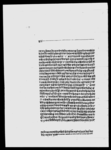An arjī by Raṇadala Pā̃ḍe to King Surendra re the description of elephants captured (VS 1897)
ID: DNA_0001_0010
Edited and
translated by Axel Michaels
in collaboration with
Manik Bajracharya and Rajan Khatiwoda
Created: 2014-12-04;
Last modified: 2022-11-04
For the metadata of the document, click here
The accompanying edition, translation/synopsis and/or commentary are available under the terms of the Creative Commons Attribution-ShareAlike 4.0 International License
Abstract
This document submits the details of the wild elephant caught at the jungle mentioned. It is prepared by Raṇadala Pā̃ḍe from the elephant stable at the Banjariya of Palhi.Diplomatic edition
[1r]
अर्जि¯ ¯ ¯ ¯ ¯ ¯ ¯ ¯ ¯ ¯ ¯ ¯ ¯ ¯ ¯ ¯ ¯1उप्रान्त•ठुलोमत्ता•दोदन्ताहातिपक्रियोभन्न्याषवरआयो•षमारिलाग्यापछि•हेरि2हातिनापिनाप्डोरिसमेत्चह्राइपठाउँलाभन्न्याअर्जिविंति•अघिचह्राइपठा
3याकोहो•पौषशुदि५रोज२कादिन¯ ¯१¯ ¯कापुण्यप्रतापले•वहुतवढियालक्ष
4णको•दाहिनुयेक्दंतामत्ताहातिपक्रियो•दुइदन्तामत्तापनि•वहुतराम्रो•स
5मलपिठभयाको•सवैअंगसावुद१८नषभयाकोरहेछ•पछिल्तिरवाटहेर्दा•सा
6नैजस्तो•अगाडिवाटहेर्दा•वहुत्उच्चादेषिंछ•अघि•सुन्दरीप्रसादहातिलाइदे
7ष्न्यामानिस्हरूर•सुन्दरीप्रसादैजस्तोरहेछभन्छन्•मेराचित्तमापनि•सुन्दरिप्रसा
8दकोमूल्षमारि•येसैहातिलेपावलाभन्न्याचित्तमालागिरहेछ•पछि•कसोठहर्छ•
9दाहिनुयेक्दन्तामत्तार•जन्मैकोशुद्धयेक्दन्तारहेछ•वाञातरफ्दाँतहुन्याज
10गामाचक्ररहेछ•हातिवहुत्राम्रोछ•अन्दाजले•दाँत•डेढहातकोदेषिंछ•अघि
11जंगल्माछँदै•दाँतकोटुपो•अलिकतिचोइटियाकोरहेछ•१८नषछन्•सवैअं
12ग•जस्ताकोतस्तासावुदछन्•टाउकोभुसूँड्•पित्तवान्•दाँत्•अडंगवाहादूरका
13भन्दाठुलाछन्•पुछरकोचँदुवापनिसावुदछ•इदुवैमत्ताहाति¯ ¯१¯ ¯का•सवा
14रिलायक्कापक्रियाभन्न्याठहरि•सेवक्काचित्तमावहुत्हर्षलागिरहेछ•अ
15वप्रांतपनिहातिषेदागर्दैछौं•जस्माफिक्काहाति•फेलापरिपक्रिनान्सो•अ
16र्जिविंतिचह्राईपठाउंदैरहुँला•२मत्ताहातिपक्रियाछन्•संभारपुगैनकिभंन्या
17सन्देह¯ ¯१¯ ¯मापर्नजाला•मैले•पाल्हितप्पाकोवंजरियामा•हातिसारैमाडेराग
18रि•चाहिन्यागैरहसंभारकोताकितिगर्दैछु•हाम्राभाग्यैलेउस्तोभयामात्र•नतर
19कौनैकुराकोविसंभारहुनपाउन्याछैन•दुवैमत्ताकोनापडोरिमात्रचह्राईपठा
20याकोछ•हाल्षमारिमात्रलाग्याकाछन्•अरुअंगअंगसवैनापि•तपसिल
21लेषि•अर्काहुलाक्माचह्राईपठाउन्याकाम्गरुला•औ•सुवेदारजसिवंतकँव
22रज्मादारलछिमन्अधिकारिले•दाँग्•सिरगाउँवाटलेष्याकोचिठिविजिनिस्
23चह्राइपठायाकोछ•नजरभैविस्तारजाहेरहोला•सिक्षाअर्त्तिमेहरवान्गि
24हुँदैरह्यावढियाहोला•विज्ञप्रभुचरणकमलेषुकिमधिकम्•इतिसम्वत्
25१८९७सालमितिपौषशुदि६रोज४मुकामपाल्हिकोवंजरियाहातिसारशुभम्
26सदासेवकरणदलपाँडेकस्यकोटिकोटिकुर्नेससाष्टांगदंडवत्सेवासेवा
27सेवासहस्रम्•शुभम्¯ ¯ ¯ ¯ ¯ ¯ ¯ ¯ ¯ ¯ ¯ ¯ ¯ ¯ ¯ ¯ ¯
Translation
[1r]
[Regarding the] following: News arrived that a big ruttish two-tusked elephant has been caught. A request letter was previously sent stating that the measuring rope would be sent [to you] after the elephant has been tied to the pole (khamāri)1 , checked and measured. On Monday, the 5th day of the bright half of Pauṣa, by your meritorious glory, a ruttish elephant with a tusk on the right side and very good features was caught. This two-tusked ruttish elephant also has spots on his back, all limbs are intact and he has 18 nails. From the back he looks very small, [but] from the front very tall. People who have ever seen the elephant Sundarīprasāda say that he looks exactly like the latter. In my opinion, too, this elephant will get the main pole, (now in the possession) of Sundarīpraśāda. [Let us see] what will prove to be the case later. This right-tusked elephant is ruttish, and he is a pure one-tusked [elephant] by birth. The place for the tusk on the left side has a cakra2 . The elephant is very beautiful. The tusk looks to be roughly one and a half cubits long. The tip of the tusk was slightly damaged when he was earlier in the jungle. He has 18 nails. All limbs are as good as ever. The head resembles a firearm; the yellowish tusk is bigger than Aḍaṅga Bahādura's. The tip of the tail is also intact. Your servant is extremely happy to have learned that these two ruttish elephants, which are suitable for Your Majesty's outings, have been caught. Even after this we shall be continuing to organise elephant hunts. As we find and catch elephants suitable for [Your Majesty's outings], we will continue to report this to you. Your Majesty may be anxious that since the two ruttish elephants have been captured, they may not have been taken care enough. Living as I do at the Banjariyā elephant stable in the Pālhi area, I have been giving instructions so that necessary care is taken. Unless our fate dictates otherwise, no carelessness will be allowed to occur. Only the measuring ropes of the two ruttish elephants have been sent. At the moment only the elephant posts have been set up. I shall perform the task of recording the details of the measurements of all their limbs and sending them through the next post. Furthermore, the business (bijinis) letter written by Subedāra Jasivaṃta Kãvara and Jmādāra Lachiman Adhikāri from Siragāũ of Dā̃g also has been sent. Its details will be learnt by casting eyes [on it yourself]. Things will be very good as long as your instructions, advice and kindness continue to be provided. What more to say to our learned lord, whose feet are lotuses!
Wednesday, the 6th day of the bright fortnight of Pauṣa in the [Vikrama] era 1897 (1840 CE) from the residence at the elephant stable of Banjariyā of Pālhi. [Let there be] auspiciousness.
As ever, eightfold salutations3 from your servant Raṇadala Pā̃ḍe. Three times reverence. [Let there be] a thousandfold auspiciousness.
Commentary
This document has been published in Bajracharya/Khatiwoda/Michaels 2015: 96-105. See there for the details on this and other documents dealing with elephants.

